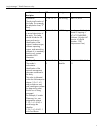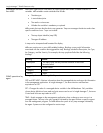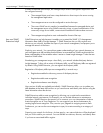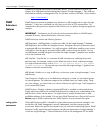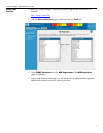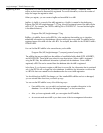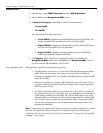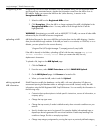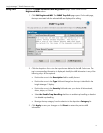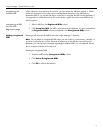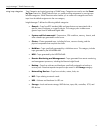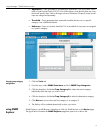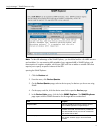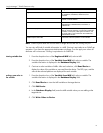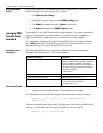
Insight Manager 7 SNMP Extensions utility
unregistering a MIB
Unregistering removes the MIB information from the database along with the dependent MIBs
and removes any associated events, whether the information comes from the MIB or from its
REV editfile. Unless you remove the MIB from the \Mibs directory, it remains in the
Unregistered MIBs column.
1. Select the MIB from the Registered MIBs column.
2. Click Unregister. When the MIB is no longer registered, the MIB is highlighted in the
Unregistered MIBs column. You may need to scroll through the list to see the
highlighted MIB.
WARNING: Unregistering a root MIB, such as MIB-II (RFC1213.MIB), can cause all other MIBs
referenced by the root MIB to become unregistered.
uploading a MIB
MIB Upload browses for the source MIB files and copies them into the MIBs directory. Vendors
often provide MIBs through websites. If the MIB you need is on a website, on CD-ROM, or on a
diskette, you can upload it to the correct directory:
\Program Files\HP\Insight Manager 7\compaq\protocol\snmp\MIBs
If the MIB is already in the folder, uploading will fail with the status message MIB upload
failed: <mibname> already exists. When you rename the MIB, use only
alphanumeric characters.
To upload a file, begin on the MIB Upload page.
1. Click the Tools tab.
2. From the menu, select SNMP Extensions and click SNMP MIB Upload.
3. On the MIB Upload page, click Browse to locate the file.
4. When you locate the MIB, select it and click Upload.
editing registered
MIB information
SNMP Extensions modify the database—not the MIB—with new information. HP does not
recommend opening the database tables or editing the source MIB. Instead, modify the MIB
information using the Edit Registered MIBs Trap Edit features. You can modify the information in
the following ways:
• Customize the trap description to include specific instructions, sources of information, or
company policy
• Change the trap type name
• Change the trap severity if vendor's default severity does not match conditions on your
network
• Specify whether traps are to be ignored. For example, disable informational traps or
repeat traps that are generated for non-critical situations. Enable trap handling if the
conditions change. Do this on a trap-by-trap basis.
• Change trap category assignment by moving the trap to a previously defined category
12



